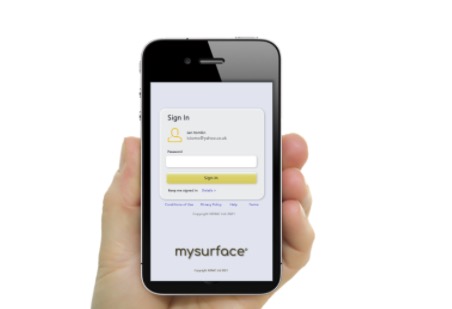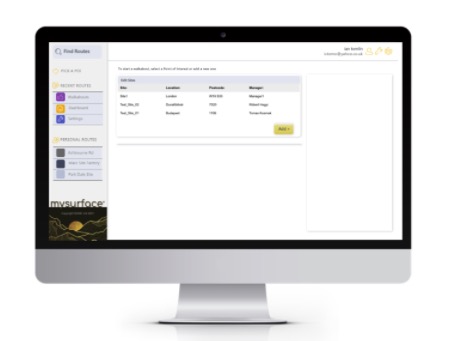EXPERIENCE ENCANVAS IN 60-MINUTES!
We're always happy to walk you through Encanvas no matter where you are in the world.

Without data, you’re just another person with an opinion
W. Edwards Deming, American Statistician
Data matters and it’s central to digital transformation. The problem is no matter how much companies invest in their data, and however they capture it, the quality will always be suspect. Without data, any ideas of digital transformation are likely to be a pipe dream. Low-code is transforming the ability of organizations to create custom apps to cleanse, organize and use their data.
Most companies hoard gigabytes of data on their finances, their products, their customers and markets. The difficulty is that almost no enterprise has its data organized in a structure that makes it easy to access. As soon as business leaders come up with ideas for business model re-invention, probably the next thought in the minds of DevOps leaders is ‘Where is the data coming from?’
Digital transformation projects have a habit of either generating new data (as in the case of sensor network-centric projects) or re-using old data (such as plotting assets or customers on a map and gaining value from location-centric perspectives), or a blend of the two. Re-using data found within the enterprise can be challenging because of data quality issues, the variations of data structures and field formats between applications, and issues getting data out of systems. This means DevOps teams need to have very good data management skills. Low-code platforms offer a smart new way for these teams to harness data that is close by but remains out of reach
How should DevOps teams approach their data challenges? Here are 10 ways DevOps teams are using Encanvas to breathe new life into their old data.
Old data may be held in various applications and formats. It’s not uncommon for Encanvas to gather information from spreadsheets, big back-office systems databases like SAP R3, IBM DB2, Microsoft Dynamics and SQL – all at the same time. Encanvas is a plug-and-play multi-threaded and multi-sourcing platform which means designers can create concurrent live data feeds from multiple systems or end-points at the same time. This capability is used extensively by designers when creating applications that re-use data from existing and new systems together, creating new data structures on the fly for the specific canvases they author as part of applications under development.
Your old data may require filtering to select only the records relevant to your project. A powerful feature built into Encanvas’s mashup environment is our special filter which allows designers to employ drag and drop controls to instantly create very powerful data filtering on inbound data from third party sources. Any number of filters can be applied to tables at the same time. For example, if a designer wants to only ingest data from a customer table of a specific type, and that relates to a specific region, they can create special filters for ‘types’ and ‘regions’ selecting only the records that apply to those conditions. All of this rich configuration is done without any coding and doesn’t influence the integrity of the ingested table, or the potential re-use of data in its native form by other applications (or canvases).
Old data may be held in various applications and formats. It’s not uncommon for Encanvas to gather information from spreadsheets, big back-office systems databases like SAP R3, IBM DB2, Microsoft Dynamics and SQL – all at the same time. Encanvas is a plug-and-play multi-threaded and multi-sourcing platform which means designers can create concurrent live data feeds from multiple systems or end-points at the same time. This capability is used extensively by designers when creating applications that re-use data from existing and new systems together, creating new data structures on the fly for the specific canvases they author as part of applications under development.
If your old data can benefit from being enriched by other sources of data, Encanvas’s mashup capabilities can really bring value by making the internal and external data accessible to applications designers without having to use coding or API to build new integrations.
Sometimes old data requires cleansing at the point of transfer from its original location using a machine to machine cleansing and transforming process to shed unwanted data and apply transformation rules to re-order, de-dupe and re-locate data to new data structures. Encanvas Software Robots make possible machine-to-machine integrations. They equip designers with the means to configure ETL actions and normalize data before it gets ingested into applications. Our software robots also automate the generation of notices to alert designers (and users too if necessary) that transformations have worked – or not. Transformations can be triggered by events, scheduled times, watch folder changes and a variety of other means.
A powerful (and pretty unique) feature of Encanvas lies in its ability to create quarantining protocols for old data that fails to live up to your expectations for data integrity. There are few good reasons to upload records that are unfit for purpose. If you are gathering customer records for example and would determine that records that fail to have any contact email, telephone or mobile numbers included are not suitable for use, then designers can create quarantining rules that filter this data out for special treatment. In such cases, the data remains ‘in the system’ but is no longer visible to users until it has been manually or machine cleaned.
It may be that old data is being ingested from multiple systems or end-points and you need to create a new data mart that has to prioritize the best likely source of good quality data over others. This can get really complicated because different systems may create new data at different speeds and this can create latency issues but, nevertheless, Encanvas has the codeless tooling to enable designers to author voting systems to vote on which source is most trusted. Voting systems can use algorithms to automatically test data integrity and then automatically augment the voting structure, or they can be manual, where the data owner or manager uses a sliding scale of trust levels to determine which source is proving to generate the best results (or both!).
When there are gaps in your old data, there are many ways that Encanvas can create new data as part of its application design. For example, the numeric controls of Encanvas allow designers to create formulas and calculations on data to total columns, sum value, source averages etc. that may be required for your new dashboards and reports but do not exist in the ingested data. Encanvas also has the ability to ingest SQL script and DLLs to make it easy for DevOps teams to re-use existing code blocks or create new APIs and transformations.
Another way to create new data is by using Encanvas’s mapping capabilities to apply location-data to existing addresses and locations. Encanvas has an integrated – and codeless – mapping engine (sometimes referred to as Geo-Spatial Intelligence, or ‘GIS’). It allows designers to plot and pin records on maps. The geo-data of records is added to the data-set (companies like Google and Microsoft charge lots of money to do this!).
Parachute in a high profile technology-centric team with a strong leader into an organization with an existing IT department it’s hardly surprising that you’re going to have to put out some fires and smooth over a few ruffles.
Balancing two-speed IT means having an internal IT team focused on reducing costs and improving process efficiencies through Business Transformation (BX) and a DevOps team re-inventing business models through Digital Transformation (DX) in tandem. Recognizing each team for its own skills and contributions to business outcomes and balancing praise is going to be important for a healthy culture.
We’ve saved the most dramatic way of fixing old data quality issues until last – because it’s no small project to build a new data warehouse to gather and re-organize data into new structures but sometimes it’s the most sustainable way to ensure that data integrity is preserved for the life of your application. For mission-critical processes, it’s probably the best quality outcome although the time and investment needed to create a data warehouse or enterprise data-hub are definitely ‘none trivial’. Encanvas includes all of the codeless tooling needed to fast-track the creation of new data warehouses and data marts using the data repository of your choice – whether you are moving towards a big data solution like Hadoop or are seeking a more traditional data structure like SQL or DB2.
So there you have it – ten ways Encanvas Low-Code can help you to turn old data into useful data for your next digital transformation.
To find out more about the capabilities of the Encanvas Low-Code platform, please contact our team.

Author
Francesca is an independent writer and head of communications for technology brands. Armed with a passion for writing about innovative technologies that can transform business, she serves on the management team of Encanvas and also works as a consultant and advisor to the executive teams of PrinSIX Technologies, Answer Pay and INTNT.AI, helping to rethink their marketing in order to tell their brand story. She can be reached via LinkedIn.

HOW TO MAKE YOUR ENTERPRISE DATA-DRIVEN BY ADOPTING A DATA CULTURE
Wikipedia describes Business Intelligence is as the strategies and technologies used by enterprises for the data analysis of business information. BI technologies provide historical, current, and predictive views of business operations. Increasingly, conversations on the subject of Business Intelligence quickly move on to the subject of building a data-driven culture and seeing data analytics (adopting business intelligence tooling) as the precursor of every business decision.
The market research portal marketwatch.com suggests the global market for business intelligence tooling will reach USD 147.19 billion by 2025, growing at a CAGR of 26.98% from 2017 to 2025. Meanwhile, Gartner suggests the analytics and business intelligence software market grew by 11.7% to $21.6 billion in 2018 in current USD. Modern BI platforms continue to be the fastest-growing segment at 23.3%, followed by data science platforms with 19.0% growth.
Organizations require low-code business intelligence tooling to build custom apps that maximize the value of their data by using it to make business decisions. When organizations shape their management approach to use data every day to make decisions, they are often described as data-driven.
A decade ago, data was interesting, useful maybe, but not always business-critical. There were ways around the problem of not sharing data. Executives could always drag someone into an office and interrogate them for answers to their questions, marketers could run forums and research projects and count on a reasonable number of willing customers or prospects to take part, salespeople could still pick up the phone and cold call their prospects.
Not today. The tempo of business changed when things went online. As eCommerce has grown, data volumes have exploded, and smartphones have increased in volumes beyond the size of our populations. With the introduction of 5G telecommunications, we are experiencing a hundred-fold increase in download speeds which means that it’s comfortably possible for me to operate a Chromebook laptop computer connected to a cloud-based repository without housing all of the apps and files I need on a hard disk. In a world with so much data, moving at light-speed is it any wonder that companies can no longer envision their managers crunching data on spreadsheets and thinking that it’s good enough!
To achieve this requires a culture change in many management teams that are accustomed to driving their business based on ‘hunches’ and ‘best guesses’ over what customers value and what they want. A digital economy means that enterprises no longer need to guess.
Jeff Bezos, the founder of Amazon is quoted as saying, “If you don’t understand the details of your business you are going to fail.”
In a digital era, businesses operate on data. Much of their opportunity is programmed into inbound marketing schemas and their operational performance depends on data analytics to execute hundreds of decisions based on fact—not gut-feel—to fine-tune internal processes and minimize sales costs.
Creating a digital culture requires a re-think in technology, people, process, and data management. This is where companies like NDMC Consulting come in; to help enterprises navigate their transformational journey. Encanvas Secure&Live is an example of an application software platform designed to equip businesses with digital culture to make decisions based on data.
Creating a digital culture will help your business to understand customer behavior, react to market changes faster than your rivals and eliminate the unknowns. What organization would not want these abilities?
The transition from analog to digital business behaviors has been swift; a matter of a few years. Many enterprises find themselves on the wrong side of this wave, operating without good customer, product, business or market insights. They find their operations somewhat sluggish compared to the ‘SaaSy’ new-kids on the block.
Even with ‘lots of data’ stored in their back-office systems, many businesses find there’s an issue with getting access to the data tools and data scientists needed to really make use of the data assets they hold.
Data has become the lifeblood of the enterprise. Executive management teams are taking more of an active ownership role in BI initiatives than ever before. Once the bastion of large corporations—because they were the only community of business able to afford the extremely high price tag—business intelligence has become democratized over the last decade thanks to affordable ‘pay-as-you-use’ applications and cloud-based technologies that scale accessibility and affordability to dashboarding and data warehousing tools.
The latest research report on the Business Intelligence industry by Dresner Advisory Service’s (2018) suggests that small organizations with up to 100 employees have a greater percentage of employees using analytics and BI apps daily. They attribute this to adoption of business models that need advanced analytics to function and fewer barriers to adoption compared to larger enterprises.
The emergence of Low-Code cloud application Platform-as-a-Service (aPaaS) solutions, mean citizen developers can now create their own web and mobile apps powered by robust databases (like SQL) and produce impressive business intelligence solutions with the latest data visualization technologies embedded.
Attitudes to data vary across businesses. Leaders generally see it as crucial and an opportunity, while many departmental leaders find it a tantalizing prospect that’s just out of reach. IT leaders, on the other hand, see data as a problem and a risk. And there will be many that see the surfacing of operational data as a risk, given that it might expose their underperformance. Bringing everyone on the same page will not be easy, but it is necessary to remain competitive in a digital economy.
Becoming data-driven is a change project like any other. To be successful, your business needs to be armed with the same state-of-the-art methods and tools that your competitors will be using. Nothing less will do.
That means harnessing robotics and artificial intelligence, analytical visualization tools, predictive modeling, and automated escalation routines. Unfortunately, when considered in isolation, none of this technology will actually help your business to harvest its opportunity and grow.
Like most changes in business, it will take a blend of ‘people, process, data and technology to become a successful data-driven enterprise—and the need to change attitudes and behaviors will as always take center-stage.
Encanvas is an enterprise software company that specializes in helping businesses to create above and beyond customer experiences.
From Low Code to Codeless
Better than code-lite and low-code, we created the first no-code (codeless) enterprise application platform to release creative minds from the torture of having to code or script applications.
Use Encanvas in your software development lifecycle to remove the barrier between IT and the business. Coding and scripting is the biggest reason why software development has been traditionally unpredictable, costly, and unable to produce best-fit software results. Encanvas uniquely automates coding and scripting. Our live wireframing approach means that business analysts can create the apps you need in workshops, working across the desk with users and stakeholders.
When it comes to creating apps to create a data culture and orchestrate your business model, there’s no simpler way to install and operate your enterprise software platform than AppFabric. Every application you create on AppFabric adds yet more data to your single-version-of-the-truth data insights. That’s because, we’ve designed AppFabric to create awesome enterprise apps that use a common data management substrate, so you can architect and implement an enterprise master data management plan.
Encanvas supplies a private-cloud Customer Data Platform that equips businesses with the means to harvest their customer and commercial data from all sources, cleanse and organize it, and provide tooling to leverage its fullest value in a secure, regulated way. We provide a retrofittable solution that bridges across existing data repositories and cleanses and organizes data to present a useful data source. Then it goes on to make data available 24×7 in a regulated way to authorized internal stakeholders and third parties to ensure adherence to data protection and FCA regulatory standards.
Encanvas Secure and Live (‘Secure&Live’) is a High-Productivity application Platform-as-a-Service. It’s an enterprise applications software platform that equips businesses with the tools they need to design, deploy applications at a low cost. It achieves this by removing coding and scripting tasks and the overheads of programming applications. Unlike its rivals, Encanvas Secure&Live is completely codeless (not just Low-Code), so it removes the barriers between IT and the business. Today, you just need to know that it’s the fastest (and safest) way to design, deploy and operate enterprise applications.
Learn more by visiting www.encanvas.com.
Ian Tomlin is a management consultant and strategist specializing in helping organizational leadership teams to grow by telling their story, designing and orchestrating their business models, and making conversation with customers and communities. He serves on the management team of Encanvas and works as a virtual CMO and board adviser for tech companies in Europe, America, and Canada. He can be contacted via his LinkedIn profile or follow him on Twitter.
Wikipedia page on Business Intelligence.
Above And Beyond Business Intelligence eBook written by Ian C. Tomlin
Beyond Business Intelligence book by Barry Devlin
Marketwatch global market report on business intelligence. Download sample report at kennethresearch.com
Gartner Market Share report, 2018

Businesses around the world are looking to seize opportunities that the digital era brings. Online communities offer new potential to create wealth. But how do enterprises harness technologies like big data and the Internet of Things (IoT) to turn data into sustainable value for your business?
Digital Transformation is too big and hairy for IT to be expected to deliver it alone. The problem is, when ‘normal people’ see code on a screen they fee disenfranchised and unable to contribute to software development discussions. This is why low-code digital transformation is the way to go.
Before considering the tooling though, it’s well worth taking a step further back. Considering IT changes without first re-visiting the design and fit of business models can result in limited returns from investments in IT.
‘A business model determines how the created customer value of an enterprise is converted into value for shareholders. The mechanism that discharges this function is sometimes called the ECONOMIC ENGINE, but fundamentally its about people, process, technology and data.’
Ian Tomlin, CEO – Newton Day
Examples of mobile and web desktop applications designed and deployed on Low-Code digital transformtion platform


A low-code digital transformation agenda recognises the key role technology has to play in fashioning results. Using a low-code, or better still ‘no-code’ platform means business stakeholders and system users get to play a key role in software development decisions. It gives EVERY relevant business stakeholder a say in how to turn your business model into technology solutions, most of all the CEO.
When Chief Information Officers or newly appointed Digital Directors get handed the task of ‘making a digital transformation work’ it can prove to be a poisoned chalice. Ultimately, it’s the CEO and not IT leaders that should have the biggest say in what business models should apply to an enterprise, and how best to orchestrate them.
The end-game for CEOs is to build or buy a digital platform and ecosystem that represents the digital interface to customers, suppliers and partners. Within this same ecosystem expect to see technology building blocks to automate business processes, although a fundamental requirement of ecosystems is to make back-office processes more transparent. Companies like Amazon are demonstrating the effectiveness of built-for-purpose digital platforms to pass over data entry duties to customers, removing many of the back-room processes that traditional suppliers continue to fulfil (unsurprisingly, Amazon doesn’t use Salesforce.com to manage its CRM; its own customer ecosystem removes the need for sales teams to key-fill data).
One of the challenges CEOs face is understanding the complexities of modern technology, not just in appreciating the applicability of technology for their business models, but during the design and deployment phase when it’s so important that ‘the business’ drives ‘IT’.
This is driving demand for a new kind of agile Digital Platform development tool-set that removes the technical barriers and risks to authoring the kind of Digital Ecosystem that can fully orchestrate a business model.
%
%
%
%
%
%
Source:
1. Altimeter Group Digital Transformation Survey
2. University of Oxford
3. Gartner (2112)
4. Gartner (2112)
5. Oxford Economics and SAP (2012)
6. MIT Sloan Mgmt. Review
What form does this new kind of Digital Transformation Platform take?
There are some obvious features we’ve described here; more in terms of what such an ecosystem needs to do in order to orchestrate business models, rather than a technical list.
Platforms need a unifying codeless ‘building block’ approach to development that’s fast and affordable; so you can make mistakes and ‘fail fast’
Fully leverages your existing data assets and makes light work of cleansing data when you start to put it to work!
Modern look and feel – Nobody wants to struggle with old fashioned User Interfaces that people can only access when they’re at their desk’
You’d expect to leverage big data, artificial intelligence, IoT, data visualizations, software robots…!
It will be running business critical apps so it needs to be resilient, scalable and ultra secure – and it needs to be on the cloud!
Easy to deploy, easy to learn and use, not at risk of creating legacy issues down the line – even better if your IT team trusted it and liked using it!
One might argue that it begins with another look at the current business model. Is the incumbent business model maximizing returns to shareholders from the customer value being generated by the enterprise? Furthermore, is the customer value sufficient to keep the enterprise competitive?
One challenge is working out how to articulate the business model into outcomes, capabilities, processes and mechanisms. One of the things the team at Newton Day helps with are Sprint Workshop programs to get through this ‘recognition of needs’ phase as expediently as possible without compromising on accuracy and detail. It’s essential that enterprises really fundamentally understand who their customers are, what they value and what it takes to deliver results.
Next, a project team and plan has to be constructed.. This should comprise of a blended team of organizational design, HR, risk, legal, IT, marketing, analyst and program management experts. Whether these individuals are contracted in, or are assigned from existing resources, it’s better to measure their contribution as a team and reward it. In my opinion, the best governance model for digital platform projects is to have a regular Project Leadership Group (PLG) of senior execs reporting directly into the board and then support this with a Project Steering Group (PSG).
Once this stage is complete, the work to develop the technology ecosystem begins. This starts with stakeholder workshops and normally, having mapped out the bigger game plan, projects focus on delivering a point of detail; an aspect of the current business model that can be improved that is seen to be a quick win. Gaining early results gives everyone inside and outside the project team confidence in the value of the program.
Now, back to the original point: Can a business expect to do all of this without the CEO leading it? Or, put another way, would a CEO not want to be leading such a strategically important initiative that will be the source of the enterprises income in future years? I would argue not.

Ian Tomlin is a management consultant and strategist specializing in helping organizational leadership teams to grow by telling their story, designing and orchestrating their business models, and making conversation with customers and communities. He serves on the management team of Encanvas and works as a virtual CMO and board adviser for tech companies in Europe, America and Canada. He can be contacted via his LinkedIn profile or follow him on Twitter.
If you’re not already using a code-less design environment then maybe you should see it for yourself. Why not request a fire-side chat and experience ‘across the desk’ applications design close-up with one of our experienced consultants?